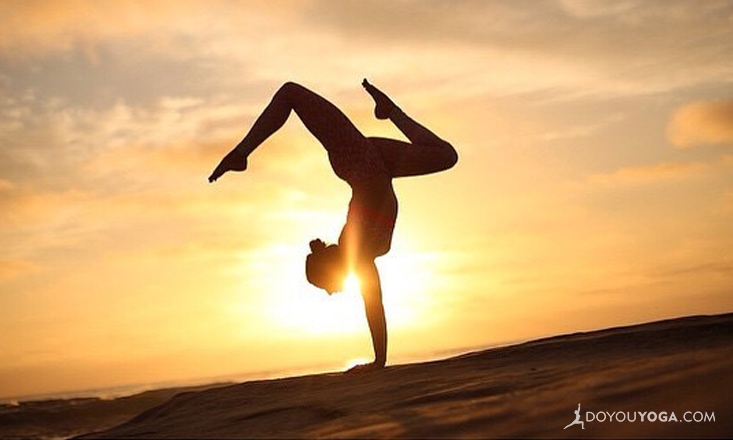There is a strong connection between our body and our mind; all of our mental and emotional tension express itself in our body. If we are not happy, or if we are worried or anxious, we will eventually feel this in our back, shoulders, or neck in the form of headaches, harmful sleep patterns, and issues with digestion.
When we are stressed or sad, our immune system becomes weaker and we are more susceptible to illness. Being happy and relaxed is the best preventative medicine. In the same way, when we release the tension from the body, the mind can relax too.
This is true for children just as much as for adults. Children do not have a stress-free life; what they do have is a different way of viewing the world. Try to see the world through their eyes and you will understand this.
Releasing Tension Through The Body
When we stretch our body in yoga, we release muscular tension. When the tension is released from the body, it gradually also leaves the mind; this is why we feel so relaxed after a yoga class!
We also release physical and mental tension in yoga through deep breathing, playing, lying down (looking at you, Savasana), being still and letting go. This is when we start using our mind to release this tension.
When we combine guided imagery with the physical relaxation, not only does the relaxation become more interesting and fun, its effects also penetrate deeper. By using our imagination, we can easily influence and even completely change our emotions and our body.
How Does Guided Imagery Work?
When we experience the world using our senses, all of the information comes through these channels into our brain and is decoded and interpreted to us there. This means the real experience is happening in our mind.
When we are engaged in imagination or guided imagery, we actually create an experience in our mind, so our brain and our body respond in accordance to what we're "seeing" in our minds—the same way as if these experiences were really happening.
Let’s say you're in Hawaii. You are walking on the beach and you feel the soft sand under your feet and between your toes, the warm breeze against your skin, and you smell the salty, seaweed smell of the ocean when you take deep breaths. You hear waves softly rolling in and out of the shore, and the setting sun leaves its last rays shimmering on the water, the sky fills with shades of pink, orange, and purple.
Now…if you were actually on the beach in Hawaii experiencing all of this, wonderful hormones are being secreted into your blood and all kinds of electro-chemical reactions are happening in your brain that make you feel so relaxed. But if you were in the city, in the middle of your very busy and stressful workday, and you close your eyes and imagine that you're on that beach with the sand, waves, and the warm breeze, you can get the SAME physiological responses!
Really immerse yourself in your imagination of being on that Hawaiian beach and you will get the same electro-chemical reactions in your brain, the same wonderful hormones are being secreted into your blood, and that sublime feeling of relaxation.
Why? Because for you, your brain, and your body, it's one and the same experience.
The inner images we create during guided imagery create a tremendous response on many emotional and physiological levels; this is the reason they are such a powerful tool in creating a positive change. When imagining ourselves to be in a peaceful, pleasant and beautiful environment, our mind and body respond by relaxing.
Guided Imagery In Yoga Classes
At Rainbow Kids Yoga, we end almost every class with relaxation and guided imagery.
The first challenge is always to have the children stop all activities and just lie down and relax. If the class was exciting and active, they will be happy to rest and be quiet for a few moments. The relaxation can take anywhere between one minute to fifteen minutes, depending on the age and mood of the children.
If the energy is too high for relaxation, try to play a meditative game or a breathing game prior to the relaxation. After a few classes, the children learn to enjoy the relaxation and guided imagery and will be anticipating it eagerly.
Guided Imagery Is A Powerful Tool To Relax
Nowadays, based on these principles, business people and professionals in many fields use guided imagery to create positive mental patterns, to relax, and to improve performance.
People use guided imagery in sports; you will see basketball players lie down on their back and just imagine shooting balls into the hoop. Research shows that this improves their performance more than actually running around the court and shooting actual balls into the hoop.
People who practice for the Olympics will imagine that they jump higher or farther and it will improve their performance.
Musicians use it. They imagine themselves playing a musical piece and it helps them perform it better. Actors and dancers use guided imagery in a similar way.
In therapy, stroke patients, who may have lost some function in their right or left hand, for example, are guided to visualize using it. They have found that the same chemical reaction is happening in the brain as if they were actually using their hand. Patients who use this method have statistically shown to improve more quickly than patients who do not!
Army people use it. Marines on submarines imagine every day that they are standing on the earth or lying down on the grass just to keep their sanity when they are out at sea for weeks at a time. Guided imagery works!
Image credit: AlissaYoga


